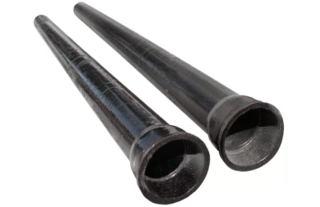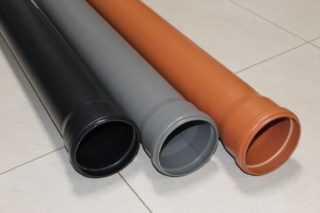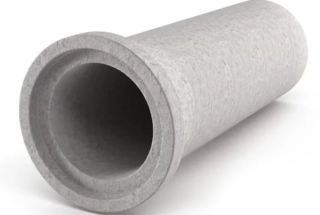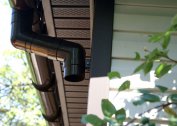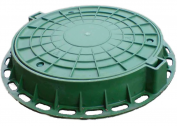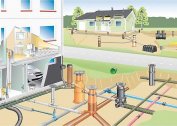The sewer system of a country house is one of the most important communications necessary for a comfortable stay. It is mounted primarily with electricity and running water. In order for the communication to work properly, it is important, at the stage of its design, to correctly select the diameter of the pipes for sewage in a private house.
Types of pipes for sewage
To lay the pipeline, tubes are made from the following materials:
- cast iron;
- polymers;
- asbestos cement;
- concrete.
For sewage in a private house, it is better to use plastic pipes (PET, PVC or HDPE).
Cast iron
The use of metal in laying a sewer pipeline is gradually losing ground to polymers. However, in some cases, cast iron is still preferable, for example, in areas with high dynamic / static load.
The production of cast iron pipes involves a centrifugal casting process. As a result, the thickness of the product is uniform over its entire length. To prevent corrosion of cast iron, the inside of the pipe is covered with a layer of bitumen.
The main advantages of metal as a material for a sewer collector:
- strength and wear resistance even with regular dynamic loads;
- durability - service from 50 years or more;
- inertness to aggressive environments and temperature extremes;
- soundproofing due to internal bitumen coating;
- environmental friendliness.
The disadvantages of cast-iron pipes include the high cost, installation difficulties due to the weight of the products and siltation of the pipeline over time. Even a layer of bitumen does not completely smooth out the roughness of the inner walls of the pipes.
Polymer
Pipes made of PVC (polyvinyl chloride), HDPE (low pressure polyethylene), PET (polyethylene) are on the market. The main positive characteristics of polymer products are:
- favorable cost;
- light weight, which means ease in operation;
- wide range of sections;
- perfectly smooth inner surface, which ensures good glide sewage on the collector towards the receiver;
- resistance to temperature changes and aggressive drains.
Polymer pipes are distinguished by color. Gray and white are intended for the device of the internal part of the sewage system. Orange and brown are used for laying the outer pipe. Corrugated pipes are in special demand. Their rings act as stiffeners when deepening products into the ground.
Asbestos cement
This material is a lightweight version of concrete products. Asbestos acts as a reinforcing agent. From this, the pipes become many times lighter, and their inner surface is smoother. Asbestos cement pipes serve up to half a century. Moreover, in working with them it is worth being cautious. Accidental mechanical action of high force can lead to a violation of the tightness of the element.
The main advantages of asbestos cement products are acceptable weight, strength and low cost. Sometimes the price of such pipes is lower than polymer materials.
Asbestos-cement tubes are used only for external sewage.
Concrete
Concrete products are used more for laying central highways for a large volume of effluents. In private construction, such products are rare, if only the sewerage will serve several cottages at the same time, including pools and saunas in their territory.
Concrete pipes withstand the effects of aggressive environments, temperature extremes and increased static / dynamic loads.The disadvantage of the products is their weight and the complexity of the process during installation. Tubes of concrete are mounted in a bell-shaped way using seals or by the method of caulking.
Criteria for choosing pipes for sewage in a private house
When choosing sewer pipes should be guided by such criteria:
- Type of work performed. If the collector is laid inside, you need to take polymer pipes in gray or white. Orange / brown polymers or cast iron are suitable for outdoor sewage.
- The volume of wastewater - taken into account when laying the external sewage system The larger it is, the larger the cross-section of the collector should be. For street sewage of a private house, the minimum diameter is 110-160 mm.
- Type of static and dynamic load on a section with an external pipeline. For high traffic it is necessary to take corrugated polymer products or cast iron. In a standard courtyard with low traffic, you can use ordinary plastic brown elements.
- Operational characteristics. Here, attention is paid to the service life of the products, limit values of temperature effects, resistance to chemical media, tensile strength and kink.
- Weight and the ability to independently cope with the laying of the collector. Otherwise, you will have to invite outside help or hire special equipment.
- Skills of work with this or that material (if it is available).
- The price of products. Each master preliminary calculates the budget for the construction of an autonomous sewer and purchases materials based on available funds.
When purchasing supplies for laying a pipeline, purchase items with a margin of 10% for unforeseen situations. When placing an order, carefully check the evenness and tightness of the products.
Choosing the diameter of the sewer pipe
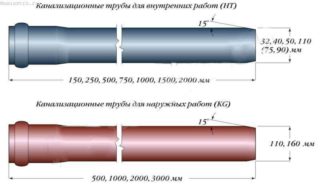 Depending on where the installation of the sewer system will be carried out, the cross-section of the tubes also changes. It is recommended to use such diameters in the following situations:
Depending on where the installation of the sewer system will be carried out, the cross-section of the tubes also changes. It is recommended to use such diameters in the following situations:
- washing and dishwasher - 25 mm;
- bidet and washbasin in the bathroom - 40 mm;
- plumbing household equipment - 50 mm;
- tap from the toilet - 110 mm;
- riser - 110 mm;
- fan pipe - 90 or 110 mm (taking a larger size is impractical);
- external sewerage - 160-260 mm and more.
All cast iron pipes have sections from 5 to 15 cm. Polymeric products for sewage are sold in diameters of 25, 40, 50, 90, 110, 160 and 200 mm.
Having decided on the type and size of sewer pipes, it is important to remember that their performance depends entirely on observing the level of the slope of the collector. According to SNiP, the inner part is tilted towards the riser at the rate of 1.5-2 cm per linear meter. The outer part of the system has a slope of 5 mm to 2-3 cm, depending on the cross section of the pipe. The larger it is, the smaller the bias can be.
Do not be too zealous for inclined planes. An excessively fast outflow of sewage towards the septic tank can provoke a blockage in the collector, and further freezing of the effluent, provided that there is insufficient deepening of the sewage system into the ground.
Before purchasing the necessary material, it is necessary to draw up a sewer project in the form of a drawing. According to it, adapters, plugs, fittings and couplings are acquired along with pipes. Without them, the installation of the system would not be complete.
